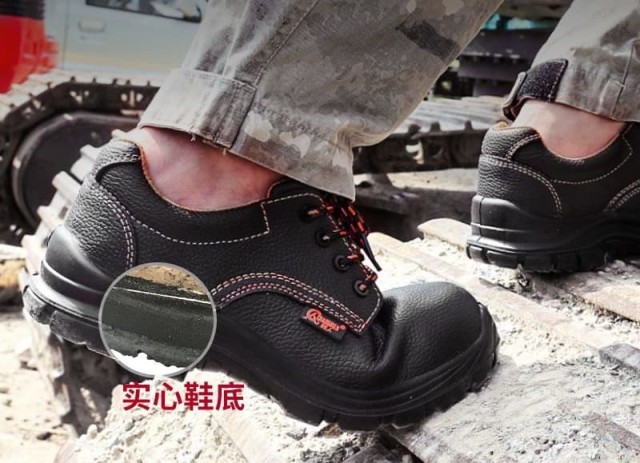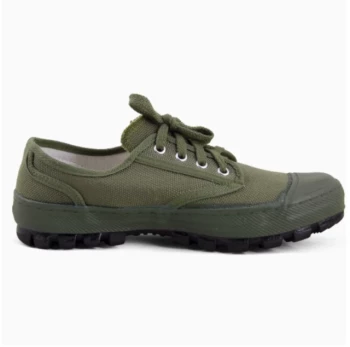When sharp objects threaten your feet at work, the right boots can mean the difference between a normal workday and a trip to the emergency room. Puncture-resistant boots blend advanced materials engineering with real-world safety needs, offering protection where steel-toe designs fall short. Let’s dissect how these boots work, where they excel, and how to choose the best option for your job hazards.
Anatomy of Protection
The Hidden Shield: Plate Composition & Layering
Puncture-resistant boots incorporate a thin but impenetrable barrier—typically a metal or composite plate—sandwiched between the insole and outsole. This plate disperses the force of sharp objects, preventing nails, glass shards, or metal scraps from reaching the foot. Research shows that materials like tempered steel or layered Kevlar® can withstand pressures exceeding industry safety standards while maintaining flexibility.
Beyond Steel: Modern Composite Materials
While steel plates dominated early designs, composites now offer lighter alternatives without sacrificing protection. For example:
- Fiberglass-reinforced polymers reduce weight by ~30% compared to steel, ideal for workers who cover long distances.
- Ceramic-infused layers provide chemical resistance in manufacturing plants where corrosive liquids are present.
- Aramid fibers (e.g., Kevlar®) add cut resistance for demolition crews handling jagged debris.
These innovations address fatigue and mobility tradeoffs, proving critical in 8+ hour shifts.
When Sharp Meets Solid
Construction Site Case Study: Nail-Embedded Surfaces
In a 2022 field study, crews wearing puncture-resistant boots reported zero foot injuries despite walking on nail-strewn surfaces daily. The boots’ plates deflected:
- 90° nail impacts (mimicking stepping on upright nails)
- Lateral punctures (e.g., sliding against rebar)
Manufacturing Floor Scenario: Metal Shard Exposure
Auto parts factories with metal stamping machines saw a 40% drop in puncture injuries after switching to composite-plate boots. The key advantage? Composite materials don’t conduct electricity, reducing risks near live wiring.
Choosing Your Armor
ASTM Ratings Decoded: PR vs. Basic Puncture Resistance
Not all "protective" boots are equal. Look for:
- ASTM F2413-18 PR (Puncture Resistant): Confirms the sole plate stops objects with force equivalent to a 120 lb person stepping on a nail.
- Basic puncture-resistant claims: Often lack standardized testing; may only guard against minor debris.
Weight vs. Protection: Tradeoffs by Industry
| Industry | Priority | Recommended Plate Type |
|---|---|---|
| Demolition | Maximum shard defense | Steel + Kevlar® hybrid |
| Warehousing | All-day comfort | Fiberglass composite |
| Electrical work | Non-conductive | Full composite |
Ready to upgrade your team’s safety? 3515’s puncture-resistant boot line merges lab-tested materials with ergonomic designs, trusted by distributors and industrial brands worldwide. Whether you need bulk orders for construction crews or specialized footwear for hazardous environments, our solutions are engineered to keep feet injury-free. [Contact 3515 today] to discuss custom safety footwear tailored to your workforce.
Because the best protection is the one you never have to think about.
Products You Might Be Looking For:
Explore puncture-resistant work boots
Related Products
- Customizable Anti-Smash Safety Boots for Wholesale & Private Label Manufacturing
- Wholesale Durable Mid-Cut Tactical Boots for Custom & Private Label Brands
- Durable Mid-Cut Tactical Boots for Wholesale & Private Label
- Wholesale Waterproof Tactical Boots Custom Suede & High-Traction Soles
- Durable Military Combat Boots with Water Drainage for Wholesale & OEM
Related Articles
- How to Choose Steel Toe Shoes That Balance Safety and Comfort
- How to Choose Safety Footwear That Solves Steel Toe Shoe Problems Without Sacrificing Protection
- How Steel Toe Shoes Prevent Injuries: The Science Behind Workplace Safety
- Steel-Toe vs. Composite-Toe Boots: How to Choose the Right Safety Footwear for Your Job
- How to Choose Steel-Toe Boots: Matching Safety Standards to Your Job Demands



















